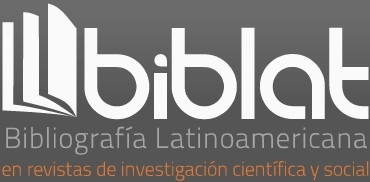The Deceptions of Post-Memory
DOI:
https://doi.org/10.35494/topsem.2020.2.44.698Keywords:
transgenerational psychoanalysis, psycho-semiotics, phenomenology of memory, enunciation, semiotic practicesAbstract
Considering the vagueness and imprecision of the notion of post-memory such as it is used in the domain of contemporary Memory Studies, this article aims to question the very distinction between memory and post-memory. Assuming a semiotic perspective centred on discourse phenomena, the psychoanalytic notion of trans-generational transmission is discussed, and its specific features are analysed. Post memory is seen as an ongoing process of semiosis which continuously modifies its content. The focus is then on the different forms —at the figurative, enunciative and pathemic level— that post-memory discourses can take depending on socio-cultural contexts.
Downloads
References
Anaut, M. (2003). Soigner la famille. París. Armand Colin.
Ancelin Schützenberger, A. (1998). Aïe, mes aïeux ! : Liens transgénérationnels, secrets de famille, syndrome
d’anniversaire, transmission des traumatismes et pratique du génosociogramme. París. La Méridienne ;
Desclées de Brower.
Assmann, J. (1992). Das kulturelle Gedächtnis. Schrift, Erinnerung und politiche Identität in frühen Hochkulturen.
Munich. Oscar Beck.
Balas-Aubignat, M.-L (2011). La face cachée des fantômes des descendants de la Shoah. París. L’Harmattan.
Darrault-Harris, I. & Klein, J.-P. (1993). Pour une psychiatrie de l’ellipse. Les aventures du sujet en création. París.
PUF.
Hirsch, M. (1992-1993, Winter). Family Pictures: Maus, Mourning, and Post-Memory. Discourse, 15(2), 3-29.
______ (1996, Winter). Past Lives: Postmemories in Exile. Poetics Today, 17(4), 659-686.
______ (1997). Family Frames: Photography, Narrative, and Postmemory. Cambridge. Harvard University Press.
______ (2012). The Generation of Postmemory: Writing and Visual Culture After the Holocaust. Nueva York.
Columbia University Press.
______ (2016, April). Les souvenirs des autres. Tenou’a. https://tenoua.org/archives/
Kaës, R. (1986). Objects et processus de la transmission. En J. Guyotat, P. Félida et al., Généalogie et transmission
(pp. 15-24). París. Echo-Centurion.
Landowski, E. (2004). Passions sans nom. París. PUF.
Langlois D. & Langlois, L. (2005). Psychogénéalogie, transformer son héritage psychologique. París. Éditions de
l’Homme.
Landsberg, A. (2004). Prosthetic Memory. The Transformation of American Remembrance in the Age of Mass
Culture. Nueva York. Columbia University Press.
Pomian, K. (1999). Sur l’histoire. París. Gallimard.
Tisseron, S. (2019). Secrets de famille. París. PUF.
Violi, P. (2014). Immagini per ricordare, immagini per agire. Il caso della Guerra Sucia argentina. Lexia. Rivista di
semiotica, Immagini efficaci, (17-18), 619-649.
______ (2017). Disappearance, Mourning and the Politics of Memory. En A. Sharman et al., MemoSur/MemoSouth.
Memory, Commemoration and Trauma in Post-Dictatorship Argentina and Chile (pp. 35-55). Londres. Critical, Cultural and Communications.
Yehuda, R. (2015). How Trauma and Resilience Cross Generation. https://onbeing.org/ programs/rachel-yehuda-
how-trauma-and-resilience-cross-generations
______ (2016, September). Holocaust Exposure Induced Intergenerational Effects on FKBP5 Methylation.
Biological Psychiatry a Journal of Psychiatric Neuroscience and Therapeutics, 80(5), 372-380.
Zingarelli, N. (1986). Il nuovo Zingarelli. Vocabolario della lingua italiana. Bolonia. Istituto della Enciclopedia
Italiana.
Cibergrafía
POSTMEMORY.NET. http://www.postmemory.net/
Downloads
Published
How to Cite
Issue
Section
License

Tópicos del Seminario is licensed under a Creative Commons Reconocimiento-NoComercial-CompartirIgual 4.0 Internacional License.














